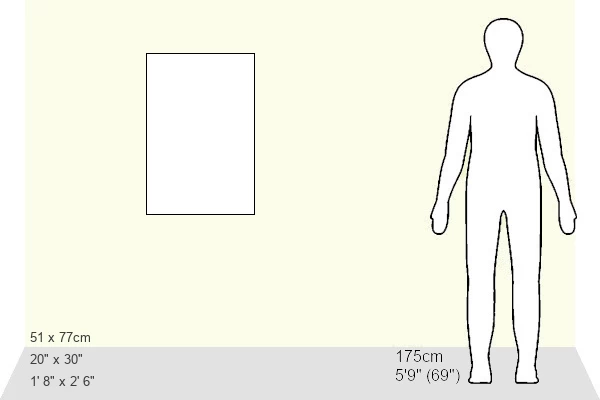Poster Print > Europe > France > Paris > Related Images
Poster Print : Long-footed kangaroo rat, Potorous longipes
![]()

Poster Prints From Mary Evans Picture Library
Long-footed kangaroo rat, Potorous longipes
Long-footed kangaroo rat, Potorous longipes (endangered), and common wombat, Vombatus ursinus.. Handcolored copperplate stipple engraving from Frederic Cuviers Dictionary of Natural Science: Mammals, Paris, France, 1816. Illustration by J. G. Pretre, engraved by Miss Coignet, directed by Pierre Jean-Francois Turpin, and published by F.G. Levrault. Jean Gabriel Pretre (1780-1845) was painter of natural history at Empress Josephines zoo and later became artist to the Museum of Natural History
Mary Evans Picture Library makes available wonderful images created for people to enjoy over the centuries
Media ID 14214590
© Florilegius / Mary Evans
Cuvier Dictionary Endangered Footed Frederic Gabriel Kangaroo Pretre Stipple Ursinus Longipes Potoroo Vombatus Wombat
20x30 inch Poster Print
Introducing the captivating Long-footed Kangaroo Rat poster print from Media Storehouse's extensive collection. This stunning image showcases the unique features of this endangered creature, Potorous longipes, as captured in a handcolored copperplate stipple engraving from Frederic Cuvier's Dictionary of Natural Science: Mammals. The Long-footed Kangaroo Rat, native to the arid regions of Australia, is known for its long, powerful hind legs and its ability to hop long distances without the need for water. This exquisite poster print, sourced from Mary Evans Prints Online, is an excellent addition to any room, bringing a touch of the natural world into your home or office. Immerse yourself in the beauty and wonder of nature with this captivating poster print.
Poster prints are budget friendly enlarged prints in standard poster paper sizes. Printed on 150 gsm Matte Paper for a natural feel and supplied rolled in a tube. Great for framing and should last many years. To clean wipe with a microfiber, non-abrasive cloth or napkin. Our Archival Quality Photo Prints and Fine Art Paper Prints are printed on higher quality paper and the choice of which largely depends on your budget.
Poster prints are budget friendly enlarged prints in standard poster paper sizes (A0, A1, A2, A3 etc). Whilst poster paper is sometimes thinner and less durable than our other paper types, they are still ok for framing and should last many years. Our Archival Quality Photo Prints and Fine Art Paper Prints are printed on higher quality paper and the choice of which largely depends on your budget.
Estimated Product Size is 51.4cm x 76.8cm (20.2" x 30.2")
These are individually made so all sizes are approximate
Artwork printed orientated as per the preview above, with landscape (horizontal) or portrait (vertical) orientation to match the source image.
EDITORS COMMENTS
This exquisitely hand-colored copperplate stipple engraving, taken from Frederic Cuvier's "Dictionary of Natural Science: Mammals," published in Paris, France, in 1816, showcases two fascinating and distinctly Australian mammals: the Long-footed Potoroo, Potorous longipes, and the Common Wombat, Vombatus ursinus. The Long-footed Potoroo, an endangered species native to southeastern Australia, is depicted on the left side of the illustration. As its name suggests, this small, nocturnal marsupial is characterized by its unusually long hind limbs, which are adapted for jumping and digging. With its long, pointed snout and bushy tail, the Long-footed Potoroo is an agile and elusive creature that primarily feeds on roots, tubers, and insects. On the right side of the engraving, the Common Wombat, a large, burrowing marsupial, is depicted in its natural habitat. This robust and powerful animal is the largest of the wombat species and is native to Tasmania and mainland Australia. With its powerful limbs, sharp claws, and strong sense of smell, the Common Wombat is well-equipped for digging extensive burrow systems, which can extend up to 20 meters in length. This stunning illustration was created by the skilled hand of Jean Gabriel Pretre, who was a painter of natural history at Empress Josephine's zoo and later became an artist at the Museum of Natural History in Paris. The engraving was expertly executed by Miss Coignet, under the direction of Pierre Jean-Francois Turpin, and published by F.G. Levrault. The intricate details and vibrant colors of this historical artwork continue to captivate viewers and provide valuable insights into the natural history of these fascinating Australian mammals.
MADE IN THE USA
Safe Shipping with 30 Day Money Back Guarantee
FREE PERSONALISATION*
We are proud to offer a range of customisation features including Personalised Captions, Color Filters and Picture Zoom Tools
SECURE PAYMENTS
We happily accept a wide range of payment options so you can pay for the things you need in the way that is most convenient for you
* Options may vary by product and licensing agreement. Zoomed Pictures can be adjusted in the Basket.



